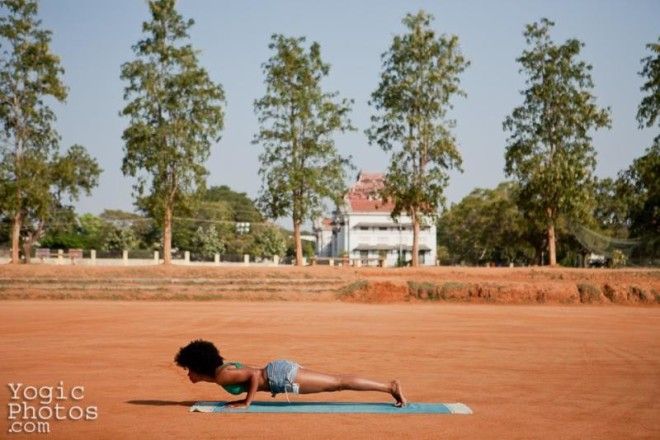
Fold forward, bringing your chest to the bolster. Sit upright, facing and straddling the bolster, with your legs fairly straight and about 90 degrees apart. A folded blanket behind the knees (smooth edge against the knee crease), draped over your calves and heels, can prevent the knees from flexing as deeply and create a softer seat. Want more props? If the floor is hard, or your knees are sensitive, you might appreciate a blanket under your knees. If your bolster is thin and soft, like the one shown here, you may want to add a folded blanket on top for additional support in some or all of the poses below. Inclined Bolster Version 1: If your bolster is firm, simply place a block on its flattest setting horizontally across the back of your mat, and tip one of the short ends of your bolster up on it (so that the highest point of the inclined bolster is at the back of the mat).

Try any of the three options below, depending on which props are available. Keep in mind that there’s more than one way to incline your bolster. Or 2 blocks and 2 blankets folded into long rectanglesįor all of the poses below, you’ll need an inclined bolster slanting up toward the back of your mat.You can do it as an entire sequence, or simply draw from it as you’d like. The following restorative yoga practice aims to minimize construction time and maximize relaxation time. I also feel that many students appreciate easy transitions that don’t interrupt their bliss too much even more than they might appreciate additional prop support. I admit that a pared-down prop arrangement may not be as relaxing as a more bounteous one (and I do suggest additional prop options below for those with the time, energy, and props to spare), but I’ve come to believe that the support of one firm bolster is enough to allow many of us to let go after a long day. I’ve come to believe that the support of one firm bolster is enough to allow many of us to let go after a long day.

(In this restorative practice, for example, we make use of the same prop setup for a few poses.) It’s especially helpful when teaching students who are newer to restorative yoga, when teaching large groups, and when teaching or practicing somewhere that might not have a vast storehouse of yoga props (like a gym or your own home, for example).Įven when I’m teaching small groups of students familiar with restorative yoga at studios with ample props, I find that being able to use the same setup for two or three poses helps the flow of class. When I finally began teaching restorative classes, the solution I gradually arrived at was to create an extremely simple setup-the one I’m sharing here-and to use that setup for all the poses in a sequence. Still, when I became a yoga teacher, I shrank from teaching restorative yoga, daunted by the prospect of talking groups of people into building the poses I’d come to love. I tried a few restorative classes, but I was put off by the elaborate setups for each pose, which I felt stole minutes from my “naps” and taxed my mind with the (for me!) terrible task of spatial reasoning (I thank all the yoga teachers over the years who patiently untangled me from straps).Įach new setup created anxiety in me: Will I be the only one who builds this next pose all wrong?Īs I slowly became familiar with the architecture of the most frequently taught restorative poses, I got over my grumpiness and learned to love practicing restorative yoga with as many props as possible.

I admit that early on in my yoga life, I wasn’t much of a restorative yogi.


 0 kommentar(er)
0 kommentar(er)
